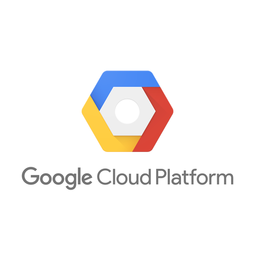Customer Company Size
Mid-size Company
Region
- America
Country
- United States
Product
- Google Workspace
- Gemini for Google Workspace
- Gemini Code Assist
Tech Stack
- Generative AI
- AI-generated transcriptions
- Zero-trust cloud-native architecture
Implementation Scale
- Enterprise-wide Deployment
Impact Metrics
- Productivity Improvements
- Customer Satisfaction
- Digital Expertise
Technology Category
- Platform as a Service (PaaS) - Connectivity Platforms
- Analytics & Modeling - Generative AI
- Cybersecurity & Privacy - Cloud Security
Applicable Industries
- Pharmaceuticals
- Healthcare & Hospitals
Applicable Functions
- Business Operation
- Quality Assurance
Use Cases
- Predictive Maintenance
- Remote Asset Management
- Regulatory Compliance Monitoring
Services
- Cloud Planning, Design & Implementation Services
- Cybersecurity Services
- Software Design & Engineering Services
About The Customer
Mark Cuban's Cost Plus Drugs is a company dedicated to transforming the pharmaceutical industry in the United States by offering prescription drugs at lower costs. The company was founded by Dr. Alex Oshmyansky and Mark Cuban, with a mission to provide transparency and trust in drug pricing. They aim to show customers the actual cost of drugs and the markup, challenging the traditional pricing models dominated by Pharmacy Benefit Managers. The company operates from the Deep Ellum neighborhood of Dallas, Texas, and has a distributed team across various locations, including Indiana, Boston, and Canada. They are committed to making prescription drugs more affordable and accessible to patients, driven by a mission to disrupt the industry and provide better options for consumers.
The Challenge
Prescription drug prices in the United States are significantly higher than in other countries, largely due to the role of Pharmacy Benefit Managers as intermediaries between insurance providers and drug manufacturers. This has led to a surge in drug prices over the decades. Dr. Alex Oshmyansky, after failing to raise funds for a nonprofit to sell drugs at lower costs, reached out to Mark Cuban via email. Cuban, known for his zero-inbox practice, responded quickly, leading to a partnership aimed at disrupting the pharmaceutical industry. Together, they founded a company with a vision to provide transparency in drug pricing, showing customers the actual cost and markup of drugs. This approach aimed to challenge the status quo and offer more affordable options to consumers.
The Solution
Cost Plus Drugs decided to migrate from Microsoft to Google Workspace, leveraging the capabilities of Gemini for Google Workspace to enhance collaboration and productivity. The integration of generative AI tools, such as Gemini, allows the company to save significant time on tasks like email management, with employees saving an average of 5 hours per week. The AI capabilities also enable more inclusive and productive meetings with real-time captions and automatic transcriptions. The company is exploring the use of Gemini to automate documentation and compliance processes, which are traditionally time-consuming in the pharmaceutical industry. Additionally, Gemini Code Assist from Google Cloud is being used to democratize coding and extend technical capabilities across various roles, despite the absence of a dedicated software development team. Security is a top priority, with Google Workspace's zero-trust, cloud-native architecture providing robust protection against cyber threats, ensuring the safety of the company's data and intellectual property.
Operational Impact
Quantitative Benefit

Case Study missing?
Start adding your own!
Register with your work email and create a new case study profile for your business.
Related Case Studies.

Case Study
Case Study: Pfizer
Pfizer’s high-performance computing software and systems for worldwide research and development support large-scale data analysis, research projects, clinical analytics, and modeling. Pfizer’s computing services are used across the spectrum of research and development efforts, from the deep biological understanding of disease to the design of safe, efficacious therapeutic agents.

Case Study
Hospital Inventory Management
The hospital supply chain team is responsible for ensuring that the right medical supplies are readily available to clinicians when and where needed, and to do so in the most efficient manner possible. However, many of the systems and processes in use at the cancer center for supply chain management were not best suited to support these goals. Barcoding technology, a commonly used method for inventory management of medical supplies, is labor intensive, time consuming, does not provide real-time visibility into inventory levels and can be prone to error. Consequently, the lack of accurate and real-time visibility into inventory levels across multiple supply rooms in multiple hospital facilities creates additional inefficiency in the system causing over-ordering, hoarding, and wasted supplies. Other sources of waste and cost were also identified as candidates for improvement. Existing systems and processes did not provide adequate security for high-cost inventory within the hospital, which was another driver of cost. A lack of visibility into expiration dates for supplies resulted in supplies being wasted due to past expiry dates. Storage of supplies was also a key consideration given the location of the cancer center’s facilities in a dense urban setting, where space is always at a premium. In order to address the challenges outlined above, the hospital sought a solution that would provide real-time inventory information with high levels of accuracy, reduce the level of manual effort required and enable data driven decision making to ensure that the right supplies were readily available to clinicians in the right location at the right time.

Case Study
Gas Pipeline Monitoring System for Hospitals
This system integrator focuses on providing centralized gas pipeline monitoring systems for hospitals. The service they provide makes it possible for hospitals to reduce both maintenance and labor costs. Since hospitals may not have an existing network suitable for this type of system, GPRS communication provides an easy and ready-to-use solution for remote, distributed monitoring systems System Requirements - GPRS communication - Seamless connection with SCADA software - Simple, front-end control capability - Expandable I/O channels - Combine AI, DI, and DO channels

Case Study
Driving Digital Transformations for Vitro Diagnostic Medical Devices
Diagnostic devices play a vital role in helping to improve healthcare delivery. In fact, an estimated 60 percent of the world’s medical decisions are made with support from in vitrodiagnostics (IVD) solutions, such as those provided by Roche Diagnostics, an industry leader. As the demand for medical diagnostic services grows rapidly in hospitals and clinics across China, so does the market for IVD solutions. In addition, the typically high cost of these diagnostic devices means that comprehensive post-sales services are needed. Wanteed to improve three portions of thr IVD:1. Remotely monitor and manage IVD devices as fixed assets.2. Optimizing device availability with predictive maintenance.3. Recommending the best IVD solution for a customer’s needs.

Case Study
Fusion Middleware Integration on Cloud for Pharma Major
Customer wanted a real-time, seamless, cloud based integration between the existing on premise and cloud based application using SOA technology on Oracle Fusion Middleware Platform, a Contingent Worker Solution to collect, track, manage and report information for on-boarding, maintenance and off-boarding of contingent workers using a streamlined and Integrated business process, and streamlining of integration to the back-end systems and multiple SaaS applications.








